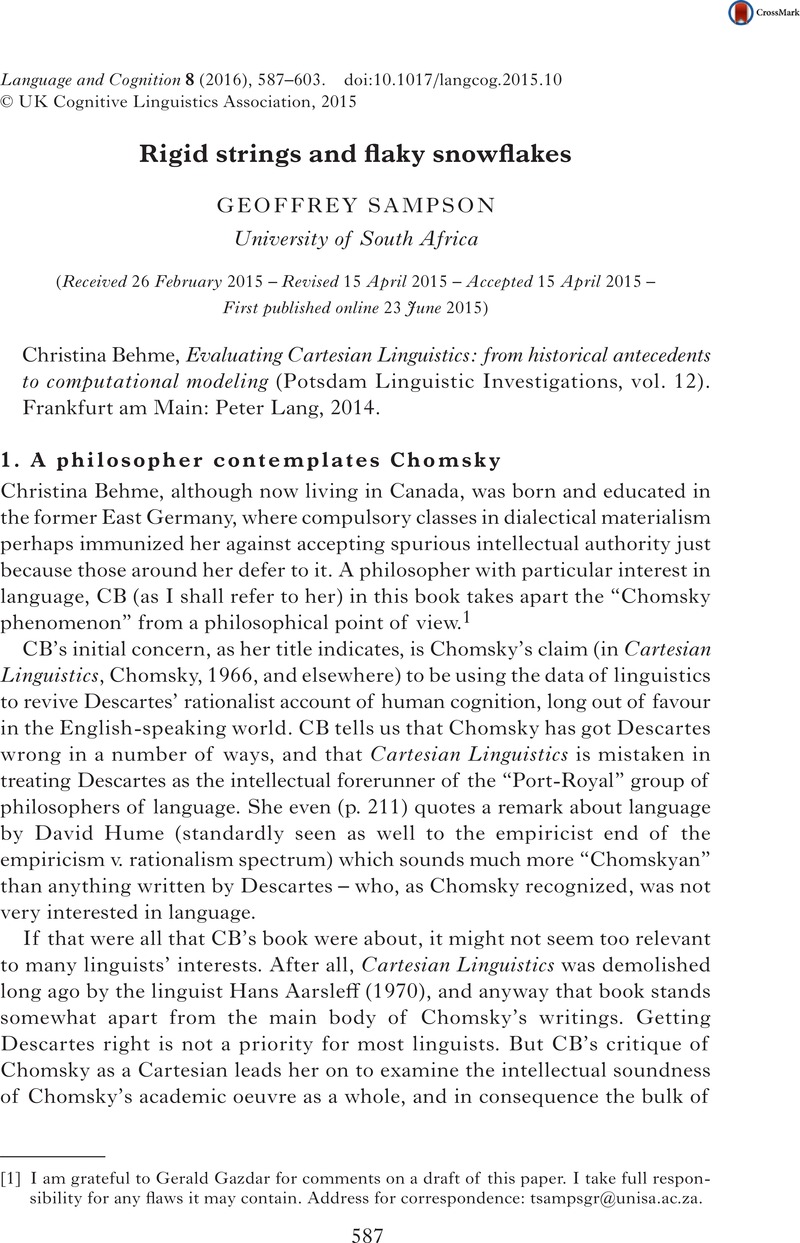Article contents
Rigid strings and flaky snowflakes
Published online by Cambridge University Press: 23 June 2015
Abstract

- Type
- Review Article
- Information
- Copyright
- Copyright © UK Cognitive Linguistics Association 2015
References
references
- 2
- Cited by



